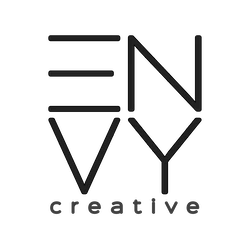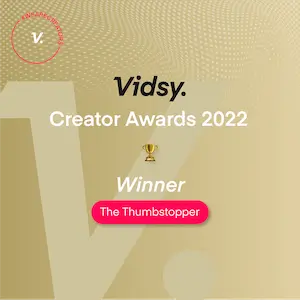A quick note from a creative director at Envy Creative
When I talk to decision makers about scaling onboarding with video, they often think production is expensive and slow, until I show them a simple, high impact pilot we shot in two days. I’m a creative director at Envy Creative, and over the last decade I’ve helped teams transform dry policies into memorable training experiences that actually stick. This post is a practical playbook for leaders who want to use video training onboarding to boost retention, reduce ramp time, and make new hires feel connected from day one.
Video Training Onboarding: Marketing Tips to Boost Retention
Why focus on video, and why now? Video is the most digestible medium for onboarding content, it scales across locations, and it can be optimized and measured like any marketing campaign. If you treat onboarding videos like customer-facing marketing, you unlock creative techniques that keep attention, increase knowledge retention, and improve culture alignment. Below I share tactics we use at Envy Creative, framed for decision makers who need results, not just pretty footage.
Design with the learner in mind
Start by mapping the learner journey, not the company org chart. Break the first 90 days into micro goals, then create short videos aligned to those goals. A 3 to 5 minute focused video that answers one key question beats a 20 minute overview every time. Use clear learning objectives, repeat core messages in different ways, and apply visual hooks so the content is memorable. I once reworked a single onboarding module from a 15 minute talking head into three 90 second scenes with motion graphics; retention scores doubled after that change.
Treat onboarding like a marketing funnel
Think of awareness, interest, decision, and action, then map content to each stage. Awareness videos explain company mission and why the work matters, interest content dives into role specific contexts, decision pieces show processes and tools, and action content gives quick how tos. Measure views, completion rates, and follow up quiz scores just like you would track a campaign. When you optimize for completion and comprehension, retention follows. That is a marketer's approach applied to internal training.
Storytelling beats instruction alone
People remember stories, not lists of policies. Use short narratives, real examples, and testimonials to make content sticky. On one project we shot a series where managers told one minute stories about the best first week they ever had at the company; that series became a cultural anchor and reduced first quarter churn. Stories build emotional context, and emotional learning is far more likely to be retained and recalled under pressure.
Production tips for scalable, high quality video
High production value does not need to mean high cost. Use consistent templates, branded lower thirds, and a small toolkit of shot types so you can batch produce content. Capture interviews with a two camera setup when you can, and collect B roll in short blocks around existing operations. Lighting and sound matter more than expensive cameras; a quiet room and good portable lights will do more for perceived quality than a top tier camera alone.
Repurpose assets like a marketing team
Create one flagship onboarding film, then chop it into micro lessons, social sized clips for internal comms, and printable checklists. Repurpose emails and intranet posts into video prompts, then measure which formats drive action. This multiplatform approach keeps messages in front of new hires without overwhelming them, and it extends the lifespan of every shoot day. We often deliver a master file plus a batch of 10 to 15 repurposed clips, saving client time and increasing engagement.
Audience segmentation for role specific retention
Not every hire needs the same content; segment by role, location, and experience level. Build a modular library where core company values are shared across groups, while role specific modules address tools and workflows. Personalized paths increase relevance and completion rates; when learners feel the content was made for them, they pay attention. Segmenting also helps you prioritize production budgets for the modules that most affect retention.
Measure outcomes, then iterate
Set benchmarks for completion rate, quiz scores, time to competence, and retention at 90 days. Video analytics can show drop off points, and quick surveys reveal what was confusing. Use that feedback to iterate on scripts and edits. One client improved their time to first billable task by 30 percent after we shortened two confusing modules and added a one minute recap at the end of each video.
Creative hooks that actually work
Small creative choices make big differences. Open with an intriguing question, use motion to introduce a concept, add a quick on screen summary at the 60 second mark, and close with a clear next step. Humor can be effective when it fits the culture, and real employees on camera increase authenticity. At Envy Creative we recommend testing a few different hooks on a small cohort, then scaling what performs best.
Checklist of quick wins
Use this checklist as a starting point for your next onboarding video project.
Audit current onboarding content for redundancy and gaps
Define micro learning objectives for the first 90 days
Produce short, role specific modules, three to five minutes each
Repurpose master assets into micro clips for internal channels
Track completion, quiz performance, and time to competence
Iterate based on analytics and learner feedback
Ready to translate these ideas into video that moves the needle? For custom video content that aligns learning with brand, visit thinkenvy.com and let us collaborate on a pilot that proves impact quickly.
Closing thoughts for decision makers
Onboarding video is not a cost center if you treat it like marketing and measure what matters. Invest in clarity, brevity, and storytelling, then optimize with analytics. The programs that win are those that make new hires feel competent and connected fast, while giving leaders measurable proof of improvement. I’ve seen teams go from fragmented PDFs to cohesive video programs that improved retention and saved manager time, and you can too.
If you want help scripting, shooting, and rolling out a high performing onboarding film, we build fast pilots that show value in weeks, not months. Check out our work and start a conversation at thinkenvy.com, we’ll help you design a program that boosts retention and accelerates performance.













